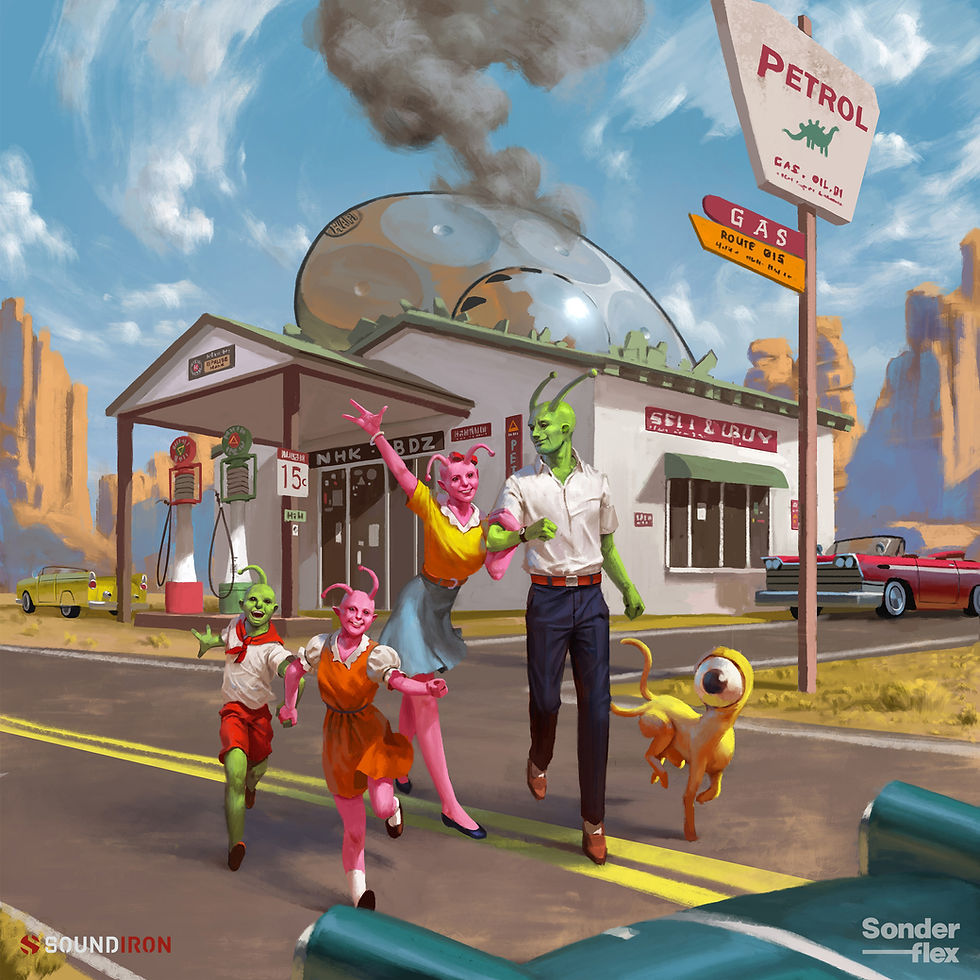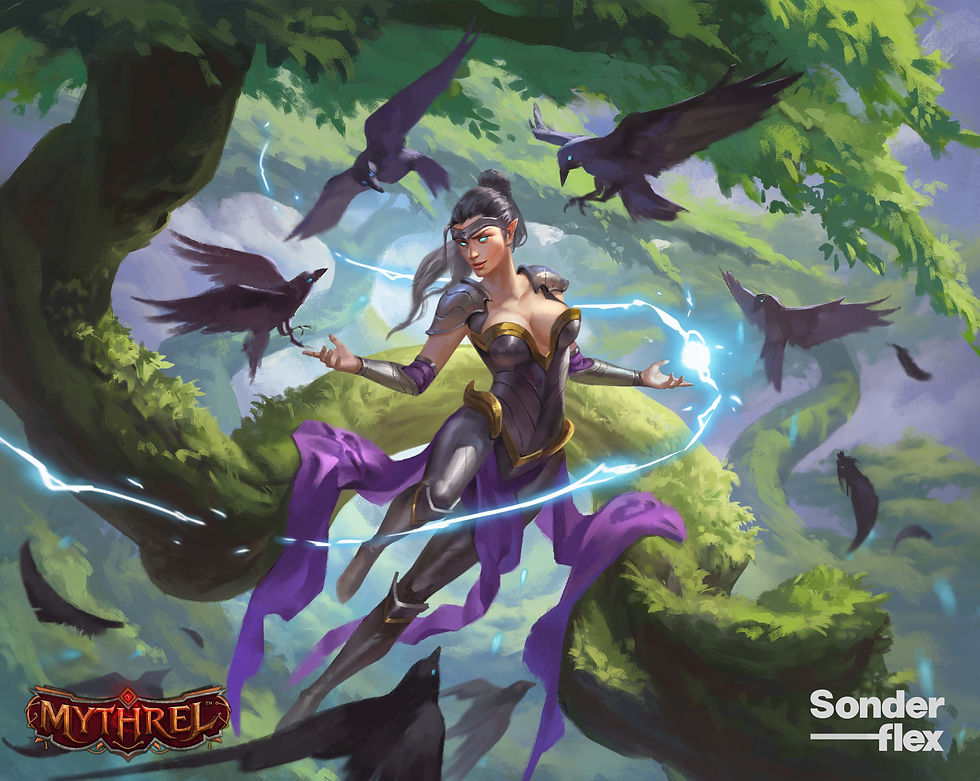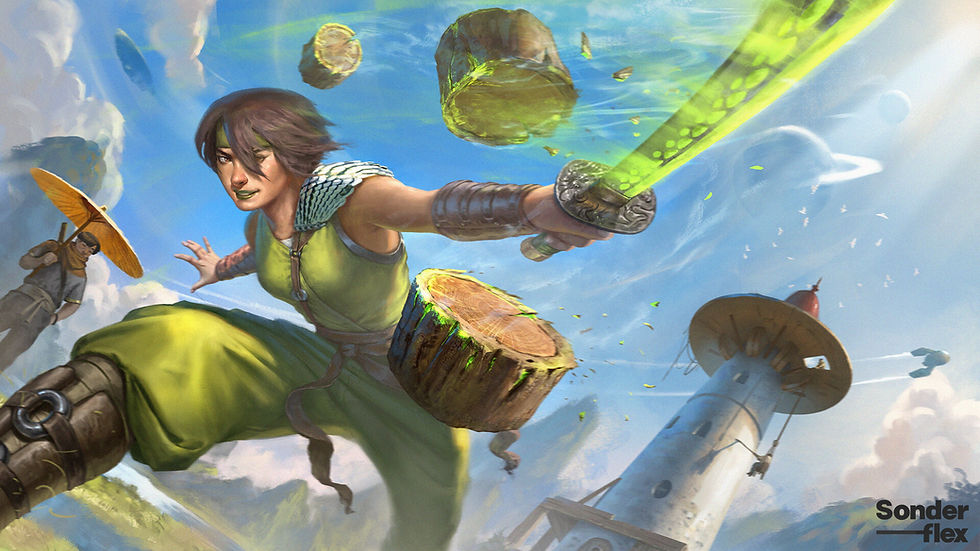Essential Art Tips for Creating Cards That TCG Collectors Love
- Sonderflex Studio
- Jul 16
- 6 min read
Sonderflex Studio - In the world of trading card games (TCGs), art is more than just decoration, it is a powerful driver of desire, collection, and value. For collectors in particular, art often defines whether a card becomes a treasured item or remains just another game piece. While mechanics, rarity, and branding all play their roles, a TCG collector is often drawn first to the visual impact of a card. In many cases, a stunning illustration is what transforms a card into an object of admiration and long-term appeal.
For creators, illustrators, and studios working on TCGs, understanding what captivates collectors is essential. This article explores the visual elements and strategies that make trading cards more collectible, memorable, and desirable in the eyes of a discerning tcg collector.

Understanding the Collector’s Perspective
Collectors approach TCGs differently than competitive players or casual fans. While gameplay remains a factor, their main interest lies in the aesthetics, rarity, presentation, and narrative potential of individual cards. They are drawn to what stands out cards that tell stories through their visuals, demonstrate exceptional craftsmanship, and display a unique artistic identity.
Because of this, illustrators must think beyond basic function. The art needs to resonate emotionally. It should inspire admiration, curiosity, or even nostalgia. It should be detailed enough to reward close viewing, while iconic enough to be recognizable from a distance. Ultimately, collectors gravitate toward cards that feel like pieces of art in their own right.
Prioritizing Character-Driven Illustration

Character cards often become the focal point of any TCG, and for collectors, these are typically the most desirable. Whether it's a legendary warrior, a mysterious mage, or a futuristic bounty hunter, strong character design creates emotional engagement. Visual identity is what makes a character unforgettable. For a card to attract collectors, the character needs to be distinctive, well-rendered, and imbued with personality.
The most sought-after cards usually feature characters with expressive poses, dynamic lighting, and clear silhouettes. A compelling pose can suggest backstory and power. Carefully rendered facial expressions and costume design add richness and individuality. When collectors feel like a card introduces them to a fully realized world or persona, they’re far more likely to seek it out and preserve it as part of their collection.
Creating a Sense of Rarity Through Art

Even in a game with hundreds or thousands of cards, some feel inherently more “special” than others and often, the reason lies in the artwork. For a tcg collector, rarity is not just about numbers; it’s also a visual cue. Cards that feature exclusive art, alternative framing, or showcase foil treatments typically carry a higher perceived value. That perception starts with how the illustration supports the card’s rarity.
To amplify this, art for rare or legendary cards should feel elevated. That doesn’t always mean more detailed, but it should be more iconic, more polished, and more theatrical. Use of dramatic lighting, intricate textures, or conceptual backgrounds can help set these cards apart. Small design flourishes, like custom borders or subtle visual effects, further enhance a sense of prestige and uniqueness.
Building Narrative Through Composition

What separates collectible cards from disposable ones is often the narrative they suggest. A compelling illustration tells a story in a single frame. It hints at who the character is, what moment is unfolding, or what larger world the card belongs to. This is especially important to collectors who value lore and world-building alongside the aesthetic qualities of a card.
Composition plays a major role in conveying story. Elements like perspective, depth, and background details should all serve the scene. A narrow crop on a face can suggest intimacy or focus; a wide shot with dramatic terrain can evoke epic scale. Consider what moment of time the illustration captures, is the character preparing for battle, casting a powerful spell, or reacting to unseen danger? These artistic choices offer narrative entry points that make the card feel meaningful and collectible.
Consistency Across Sets and Series

For collectors who are building long-term collections, consistency matters. When a TCG maintains a strong, unified art direction across multiple sets, it builds trust and brand identity. A tcg collector is more likely to stay engaged when they know that each new release continues the visual standard they’ve come to appreciate.
Consistency doesn’t mean uniformity. There should still be room for stylistic variety, especially with guest illustrators or special editions. But the core identity of the game, its color palette, rendering style, thematic motifs should remain steady. This allows collectors to build visually cohesive sets, increasing the sense of completion and investment.
A successful approach here is the creation of an internal style guide before production begins. At Sonderflex Studio, we ensure that every artist on a TCG project understands the project’s visual DNA. This allows for creative freedom within defined boundaries, supporting both variety and cohesion two elements collectors look for when curating their collections.
Understanding Foil and Print-Specific Design

The collector experience extends beyond the digital screen. Once a card is printed and in hand, its quality and finish can either elevate or diminish its appeal. This makes it essential for illustrators to understand how certain colors, textures, and effects translate in print especially when working on foil, holographic, or spot-gloss cards.
Some artworks that look vibrant on screen may become too dark or lose detail when printed with foil overlay. Conversely, subtle lighting or highlights may become more striking in print when paired with the right treatment. Collaborating closely with the production team or printer can help ensure that the artwork complements the final printing method, giving collectors a product that feels both premium and intentional.
In rare cases, even small details like where the card frame ends or how elements break the border can influence perceived value. Collectors tend to appreciate art that feels like it stretches beyond its constraints or plays cleverly with layout conventions.
Signature Styles and Iconic Artists

Another element that TCG collectors value is the recognition of specific artists. Just as comic book fans may follow a particular penciler or inker, TCG fans often gravitate toward cards illustrated by standout names. This artist recognition adds collectibility to cards and builds excitement for new releases.
A distinct, recognizable style, whether that’s hyper-detailed rendering, minimalist line work, or surreal color palettes can turn an illustrator into a brand. This is especially true in games that celebrate their artists publicly, either through signature cards, artist spotlights, or commissioned variant artworks. Game publishers looking to cultivate a passionate collector base should invest in relationships with illustrators who can build that kind of following.
As a studio, we’ve seen how working with consistent talent across multiple sets helps grow fan loyalty. When collectors start recognizing the artist behind the work, the card becomes more than a game asset, it becomes a signature collectible.
Emotional Value and Long-Term Appeal

Finally, it’s important to remember that art has lasting impact. A tcg collector may hold on to a specific card not just because it’s rare or valuable, but because it represents a memory, a moment, or an emotion. Cards that become iconic often have emotional depth, either through character design, storytelling, or the time in a player’s life when they discovered it.
This is where artistic choices become more than technical execution. A single composition, expression, or scene can evoke wonder, melancholy, excitement, or nostalgia. The best TCG art taps into universal emotions while remaining true to the world of the game. When art resonates emotionally, collectors are more likely to keep those cards, display them, and speak about them, creating value that goes far beyond gameplay.
Conclusion

In the trading card game industry, illustration is a key factor in driving collector engagement and long-term success. For any creator aiming to capture the attention of a tcg collector, art should be approached with strategic intention and emotional insight. It’s not just about drawing well, it’s about crafting imagery that speaks to identity, rarity, story, and brand. Whether you’re working on your first indie set or scaling up a competitive title, investing in meaningful, collector-focused art is essential.
At Sonderflex Studio, we help publishers create artwork that collectors remember. From character-driven pieces to iconic foil-ready compositions, our goal is to help you produce cards that go beyond the game and into the hearts and hands of your most dedicated fans.
If you're looking to elevate your next set with artwork collectors will love, we’d be glad to explore how we can bring that vision to life.
Give Your Game Remastering Project a Visual Quality Upgrade with Sonderflex Studio's Expertise

Sonderflex Studio offers specialist visual design skills that are not only captivating but also effective. Game Remastering requires expertise able to deliver the same feeling and message as when the game was first played, yet looking twice as appealing.
Sonderflex Studio's visual design also considers the creative process with in-depth research into which remastered game values can and cannot be changed. Drop Sonderflex Studio a hello, and let's discuss further!


